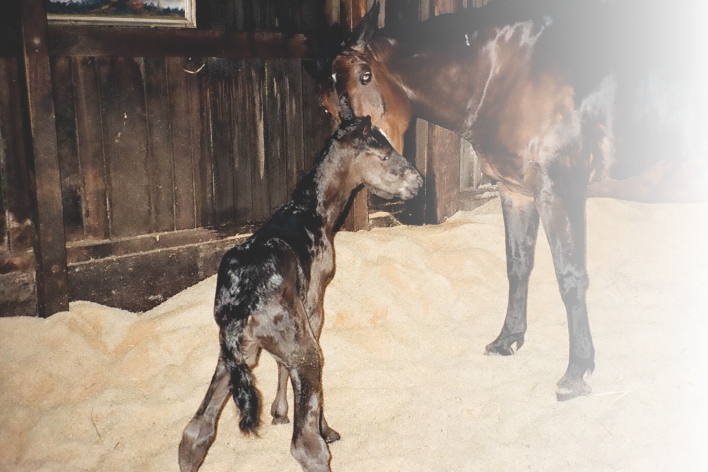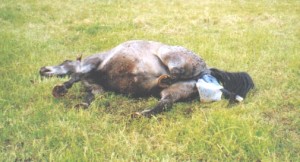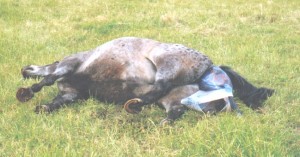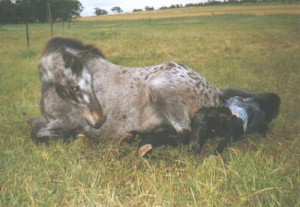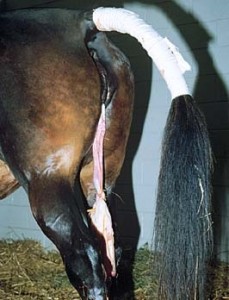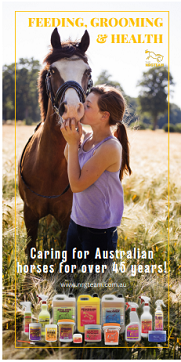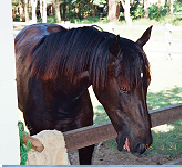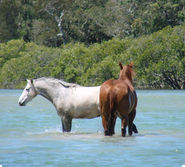It is the time of the year again as we approach foaling season. In most cases (over 95%) the event goes as planned. The following is some suggestions on foaling difficulties, how to assist and when to call for help. It is not exhaustive but focuses on the more common problems.
The impending birth – The mare’s gestation is approximately 340 days. Any birth 3 weeks before or after may be considered abnormal and should be investigated. A normal mare will bag up 2-6 weeks before delivery and wax up 24-48 hours before delivery.
A vet should be called if:
- the mare runs milk
- the mare has any discharge from her vulva.
- the mare goes off her food or shows any colic symptoms
- any other abnormal symptom or behaviour
In the preceding 24 hours before birth the mare may be restless, picky about her food, show wax on her teats, walk the fence, groan when lying down – all are early signs of labour.
1st stage – 15 to 90 minutes
- mare is restless, raised tail, frequent urination
- foal actively participates
- foal forced to cervix and waters break
2nd stage – delivery of the foal (12 – 15 minutes
- mare lays down, abdominal contractions begin
- a white bag appears in the vulva
- foal’s limbs should appear within 5 minutes
- foal’s nose should be seen when legs protrude
- stronger contractions & foal delivered
- sac tears and umbilical cord breaks
Things you can do:
- leave the mare alone – DO NOT interrupt the foaling process if it is continuing as normal
- the foal is sometimes born within the bag. If not assisted it will suffocate. Break the bag and clear it from the foal’s nose
Call a vet immediately if:
- 20 mins have passed and there is no progress or the foal appears stuck
- the foal’s hooves appear to be coming out of the rectum not the vagina.
- a red bag instead of a white bag appears – this means the placenta has separated prematurely and the foal has no oxygen
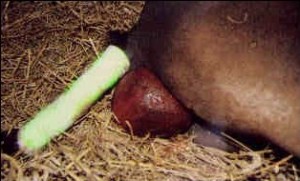
http://www.poolhousevets.co.uk/equine_expecting03.jpg
- the foal is not breathing after delivery – stimulate the nose, mouth and ears by rubbing with a towel, if necessary mouth to nose resuscitation while waiting for assistance.3rd stage – expulsion of foetal membranes
- foetal membranes should pass within 2 hours
If membranes are not passed within 2 hours – CALL A VET
DO NOT pull the membranes
DO NOT attach a weight to the membranesPost foaling management
A normal foal- sucking reflex – 2 – 20 minutes
- sitting 1 – 2 minutes
- standing 1 – 2 hours
- feeding within 2 hour
Call a vet if the foal:
- is not sucking by itself
- is straining to defecate or urinate
- is struggling to stand, walk
- appears flat, lethargic or asleep on its feet
- is lame or has swelling or pain
- you are concerned
Call your vet to:
- check the mare and the afterbirth to ensure that she has the best chance of maintaining her fertility and health.
- check the foal and ensure that it is in optimal health
- perform an IgG test on the foal 12 to 24 hours after birth to test for passive transfer of immunity from dam to foal. Without ingestion and absorption of colostrum (dam’s first milk) the foal has little chance of survival
SUMMING UP: Although horses are notoriously good at foaling, if problems arise with the mare or foal, they can deteriorate very quickly. So be sure to have a good working relationship with your equine veterinarian, and call if you are unsure of anything. That way, as a team, you can prevent the excitement of your new arrival turning to tragedy.
By Dr Gill Scroxton BSc BVMS












